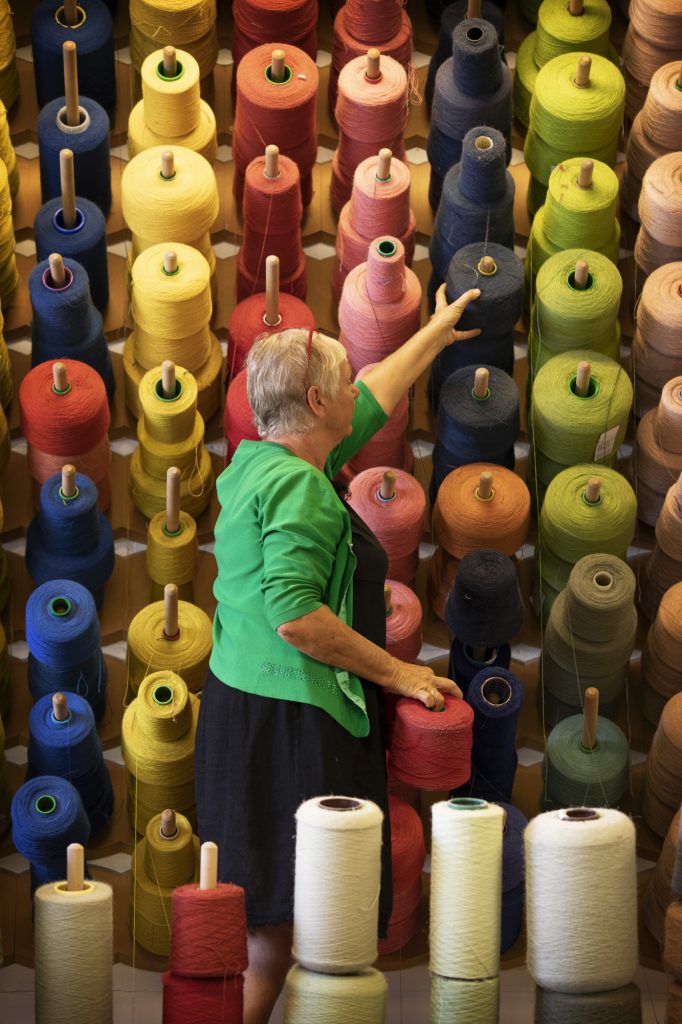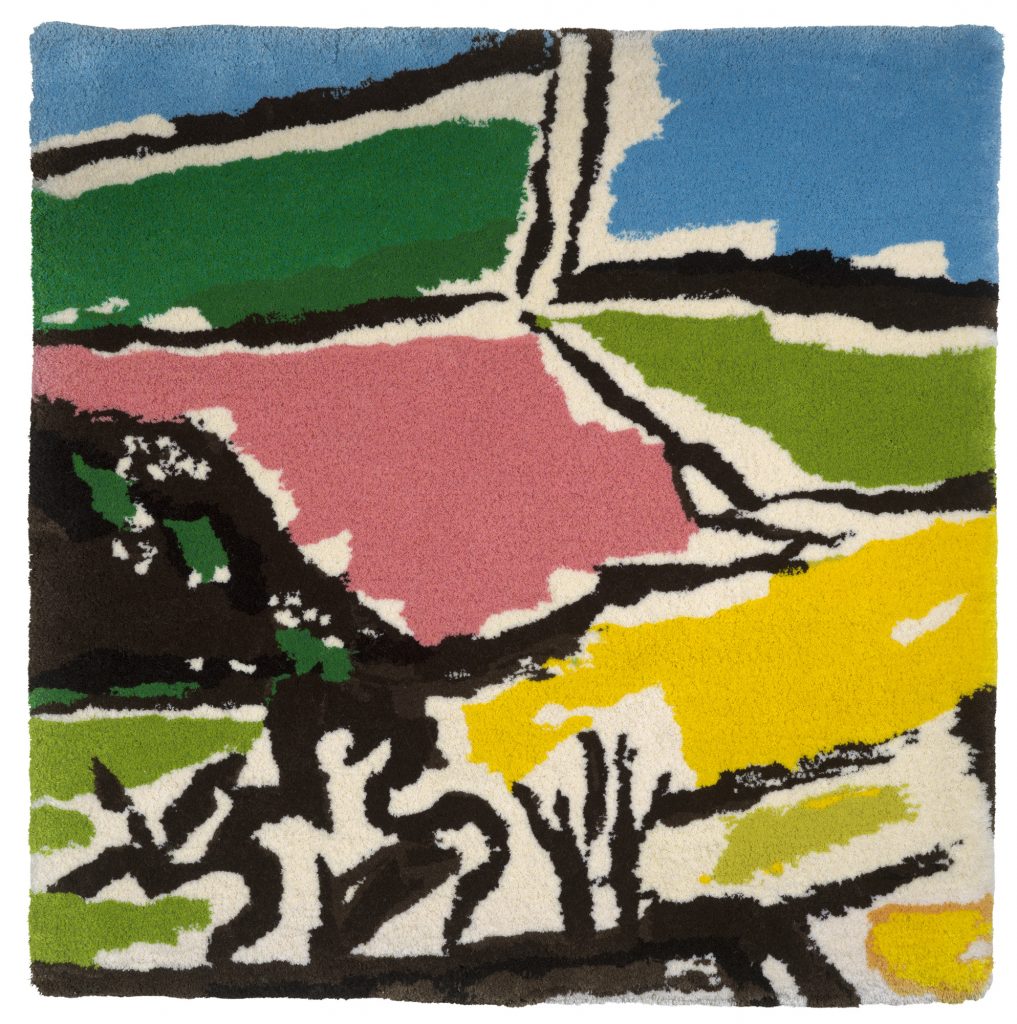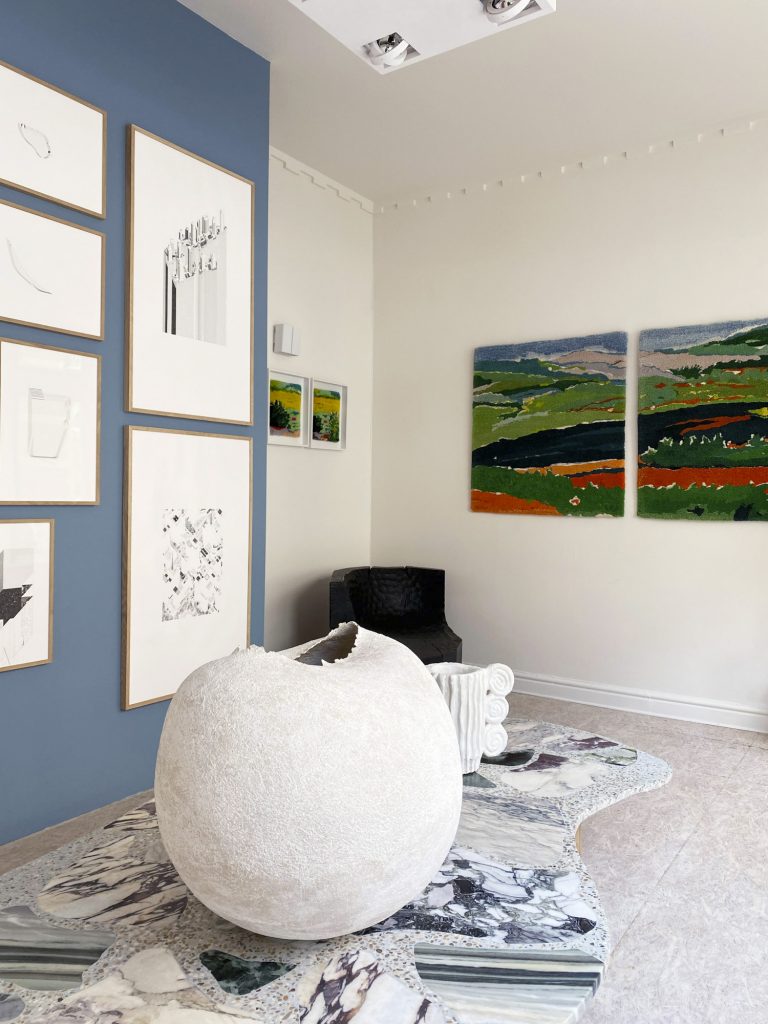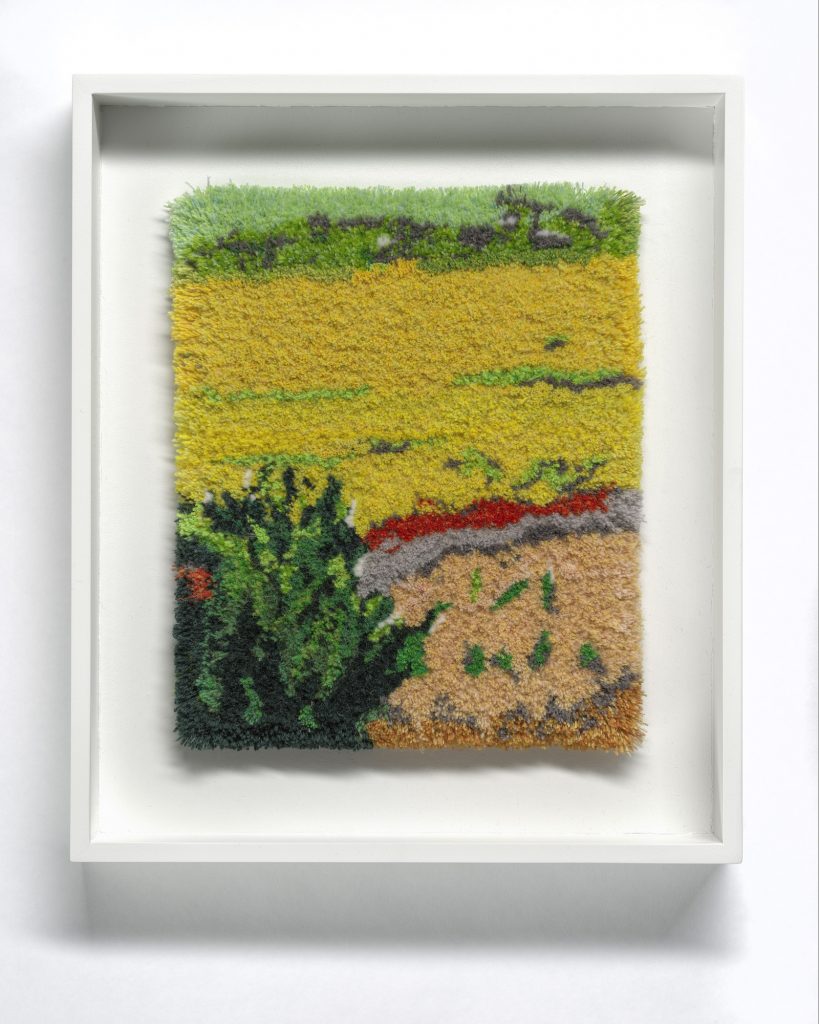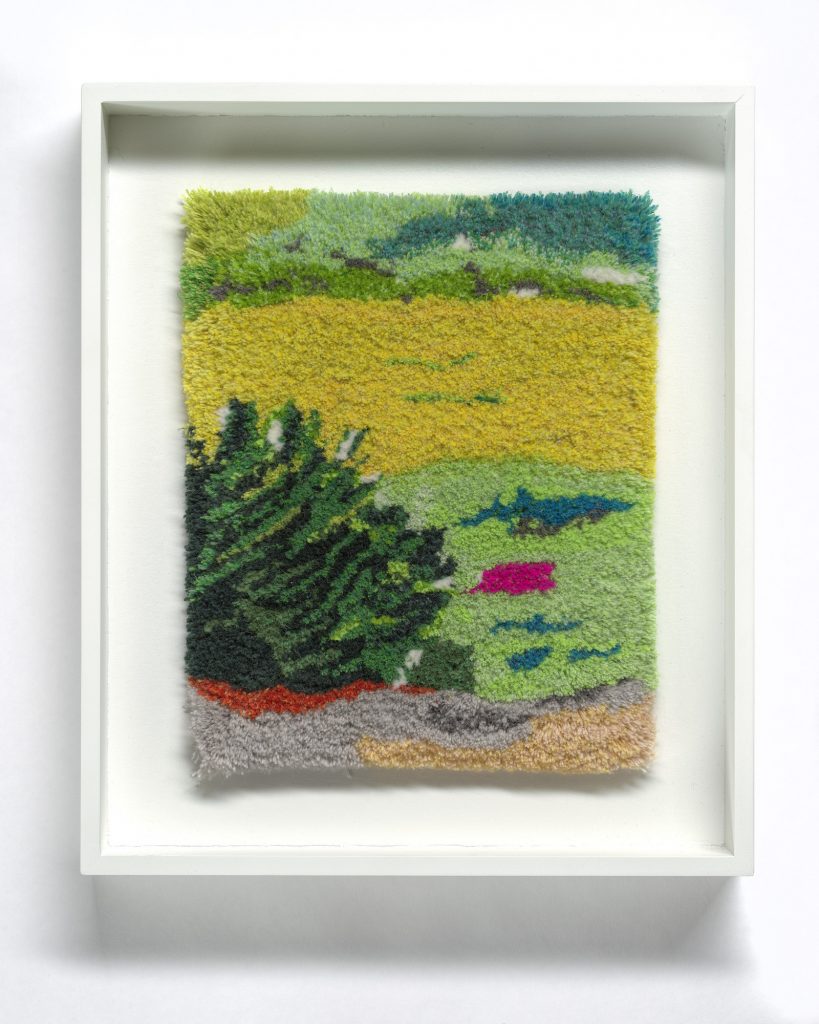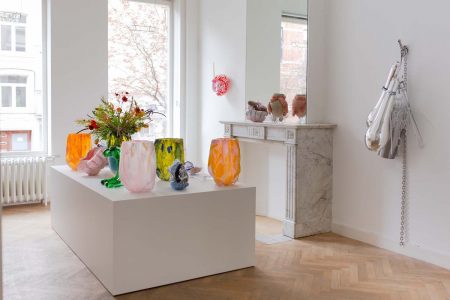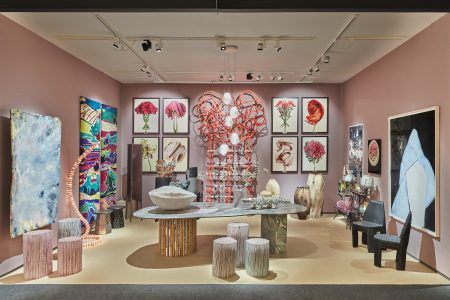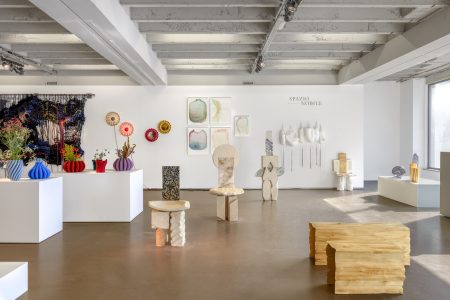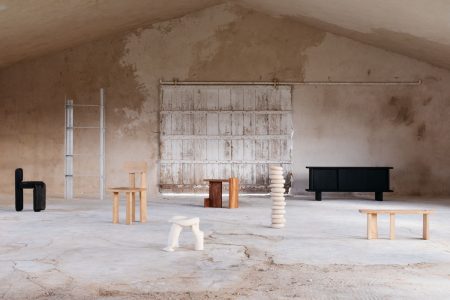Vera Vermeersch: Unravel and Recompose
Vera Vermeersch’s practice exists at the intersection of art and craft, formed around a colourful and intuitive process of transposing landscape and image into textile forms. TLmag speaks with the artist about her process and inspirations.
The creative practice of Vera Vermeersch exists at the intersection of art and craft, formed around a colourful and intuitive process of transposing landscape and image into textile forms. With a practice established over the past 25 years through collaborations and her own individual work, the Belgian artist draws in particular upon Italian landscapes, interpreted and reimagined through abstractions of colour and materiality. TLmag speaks with the artist about her process and inspirations.
TLmag: What drew you to work with textiles?
Vera Vermeersch (VV): Textile has run like a red thread through my life. It is a material and medium I have always felt very attracted to. Early on, I learned to spin, weave, and naturally dye woollen thread. While I was in my final year of studying art history, I started a 3-year programme on weaving. During this time, I immersed myself in the craft and became proficient in the practice. I realized that I felt compelled to work with my hands. Being absorbed in manual work brings an inner peace which frees up space for creation, poetry, and emotion. This is what raises the craft far above the mere materiality of it. I later worked in restoration, however I felt that this did not leave enough room for personal interpretation and creation so I started a hand-tufting atelier with my husband, Werner Gilson. We began to produce contemporary carpets and tapestries designed by artists. We deliberately opted for hand tufting rather as it gave us the opportunity to link an old craft to contemporary art and innovative technology. To me, the wool represents not just the paint; it is the tool through which I express myself.
TLmag: How do you see the relationship between textile and landscape in your work? Which landscapes in particular inspire you?
VV: It never ceases to amaze me how nature continually renews itself. It is a process that I recognize in the way art also always carries on. Nature makes us humble; it puts the world into perspective! Our country house ‘La Palude’, my poetic safe haven in Montferrat, Italy, allows me to slow down and escape from the complexities of everyday life. It opens up room for imagination and creativity. From this wonderful retreat, I can observe the patterns and shades of a landscape unchanged for centuries; the veins and furrows in the fields, the vineyards, hazel trees, patchworks of earth or snow, the hills in the background. I share an intimate bond with the layering of the landscape and its horizon. ‘E un paesaggio dolce’: it is a sweet landscape.
The landscape carpets are all based on fragments of the Piedmont region in northern Italy. I cannot work on a landscape I haven’t seen for myself; the image that inspires me has to be engraved in my mind and memory. It is my feeling that a landscape has that in common with its translation into textile; it can be just as tactile, soft, warm, sensitive, endearing, and poetic. Depth and abstraction are made almost palpable through the use of relief, color shades, and borders. The process unravels the landscapes and recomposes them with yarn.
TLmag: How do you use colours in your work?
VV: Colour inspires me. Colour is oxygen; it allows me to breathe. My thoughts are coloured. I feel, hear, and smell colour. Sometimes colour allows you to catch a glimpse of something spiritual, and they can be used in a symbolic way. Sometimes I use it delicately, sometimes sumptuously, and its use allows me to create patterns. Just as a line would do, colour may define a composition. It can be used to create new shapes, to define boundaries. It is essential to seek out the right colours to express the exact feelings you want to convey. I use threads consisting of seven strands of yarn, which allows me to create lots of new colours as well as subtle differences in shade. I feel that mixing colour threads is one of my main skills. I do it intuitively and it is my favourite part of the whole process.
TLmag: You have undertaken numerous collaborations with other artists. How does the process of collaboration work? What do you enjoy about working with other artists?
VV: Up until five years ago, eighty percent of my time was spent on assignments from artists and designers. Some artists allow no room for interpretation. Others give you a lot of freedom. The first commission I had was for my father, the artist José Vermeersch, who carefully prepared everything, to the smallest details. The project I worked on with Maarten van Severen,on the other hand, was more conceptual. He had an idea that we worked on together by meeting often and preparing samples. Pieter Vermeersch just handed me an A3 print and gave me a lot of freedom. In a project with Roger Raveel, my starting point was an existing painting. He joined me in my studio several times during the process. Koen Van Mechelen sent me a digital image and sometimes drew adjustments directly on the tufting cloth. Nick Andrews, a virtuoso painter, gave me free rein and was always wildly enthusiastic with the result. It always felt like a party!
You have to relate to and empathise with the work of the artist, while still remaining loyal to your own signature. You have to read and unravel their design or concept. Rather than imitating or copying, I interpret the work but the original vision must remain tangible in the carpet. I follow the line of the artist, but do it in my own handwriting. Each carpet produced in the atelier tells you something about both the artist and the carpet-maker!
TLmag: How do you view the relationship between art and craft?
VV: To evoke beauty and emotion, you need more than something that is merely ‘well made’. We want our carpets to be a crafted product with high artistic and decorative value. They are created through harmonious collaboration between art and craft; a symbiosis between artistic expression and artisanal techniques. The technique needs to be good and innovative, and the quality of the material must be outstanding. But if there is no philosophical or poetic approach, soul and emotion will be lacking in the object. To make it complete, imagination, fantasy, and vision have to come into play. The passion of the maker also determines the beauty of the object. The artisan needs to mould the technique to her will. She needs to be able to think out of the box, push boundaries, and innovate. Only then does it become art, transcending craft. Art and craft cannot be labeled as being just that; they need to intermingle and intersect. Things only get interesting when the two worlds collide, influence each other and cross-pollinate.
Vera Vermeersch’s work Patronen van het Landschap is on show at Spazio Nobile Studiolo.
169 Rue Franz Merjay, 1050 Brussels, Belgium.
Work and exhibition images courtesy of Spazio Nobile, © Margaux Nieto.
Portrait images courtesy of Vera Vermeersch.
